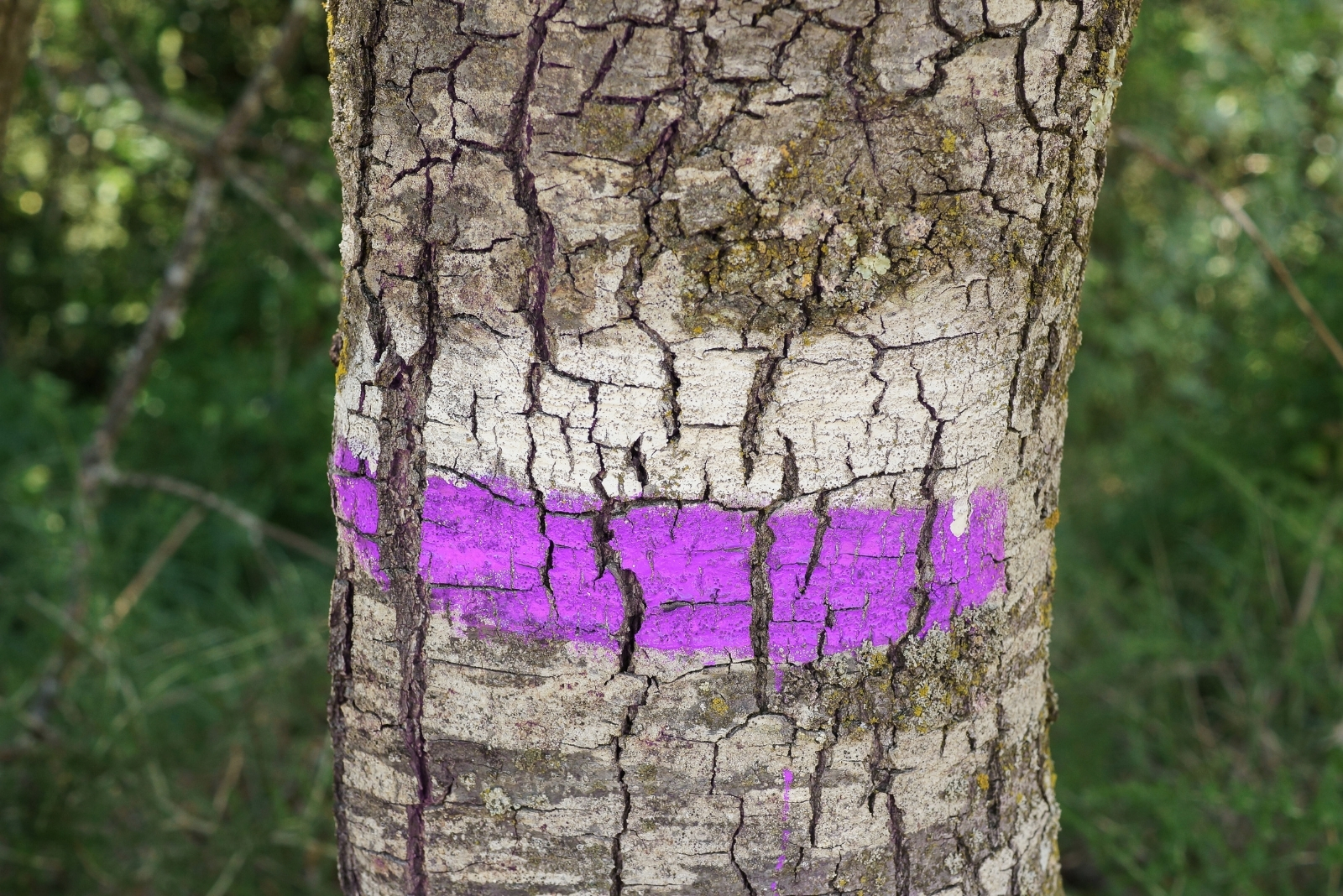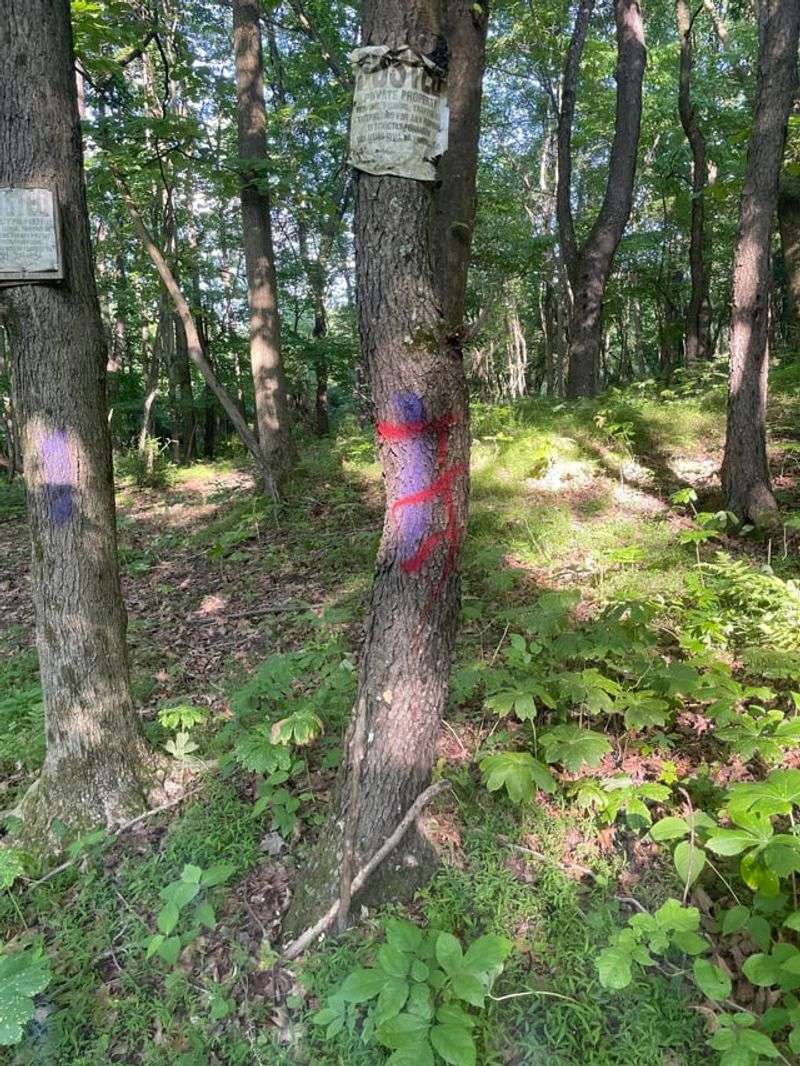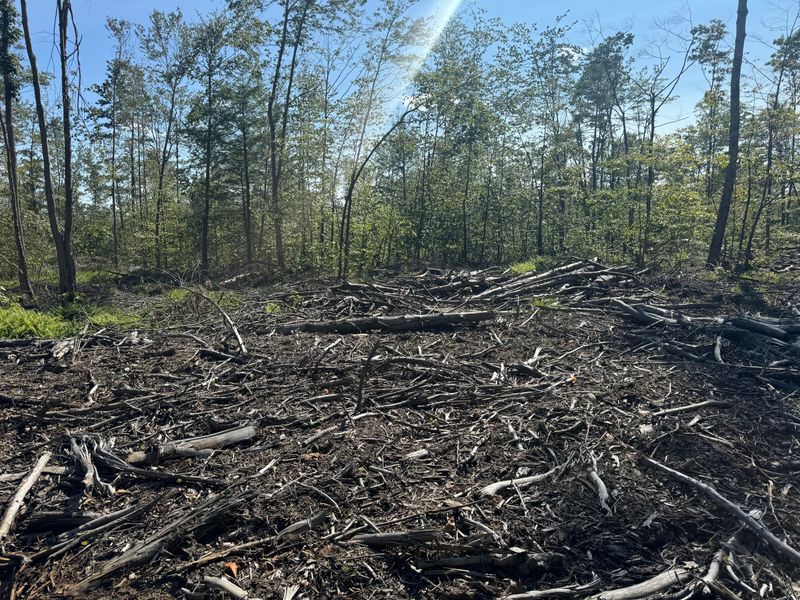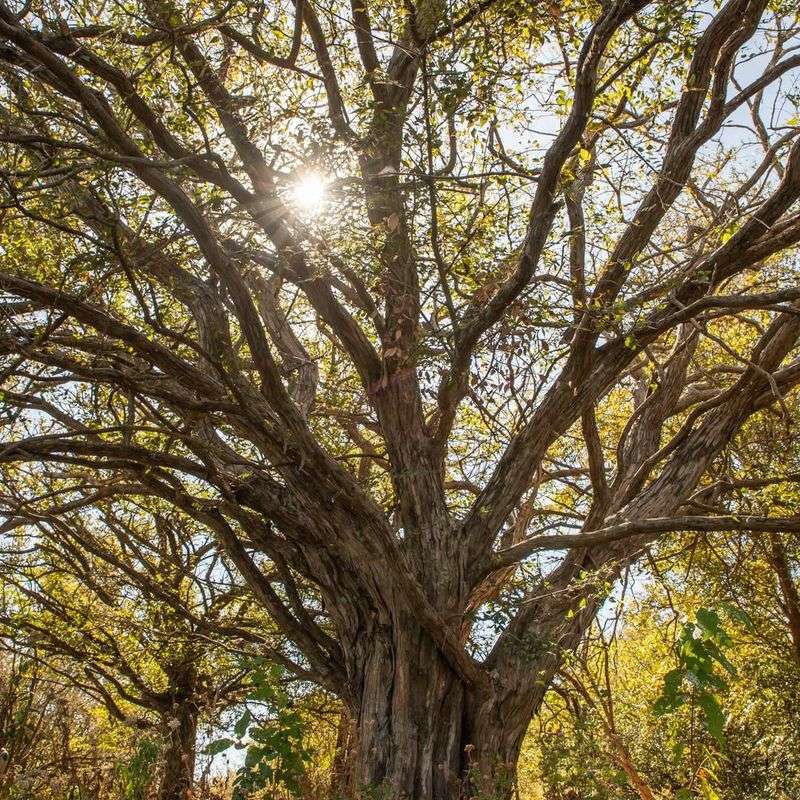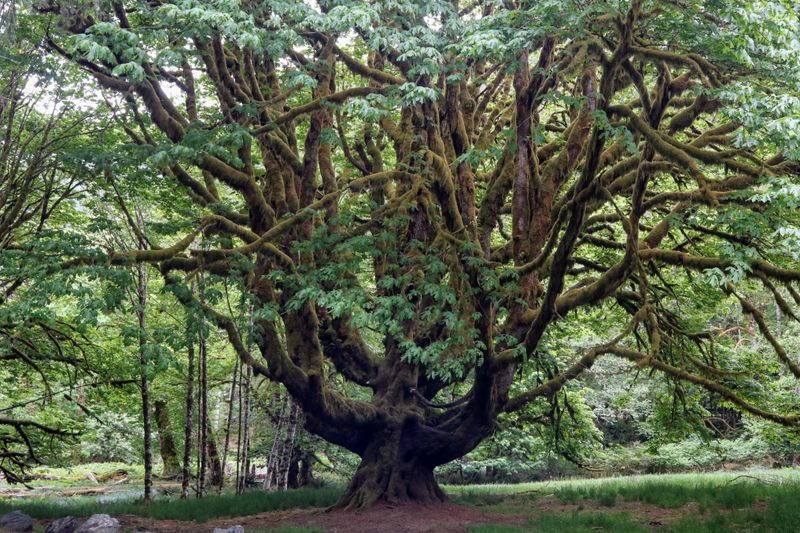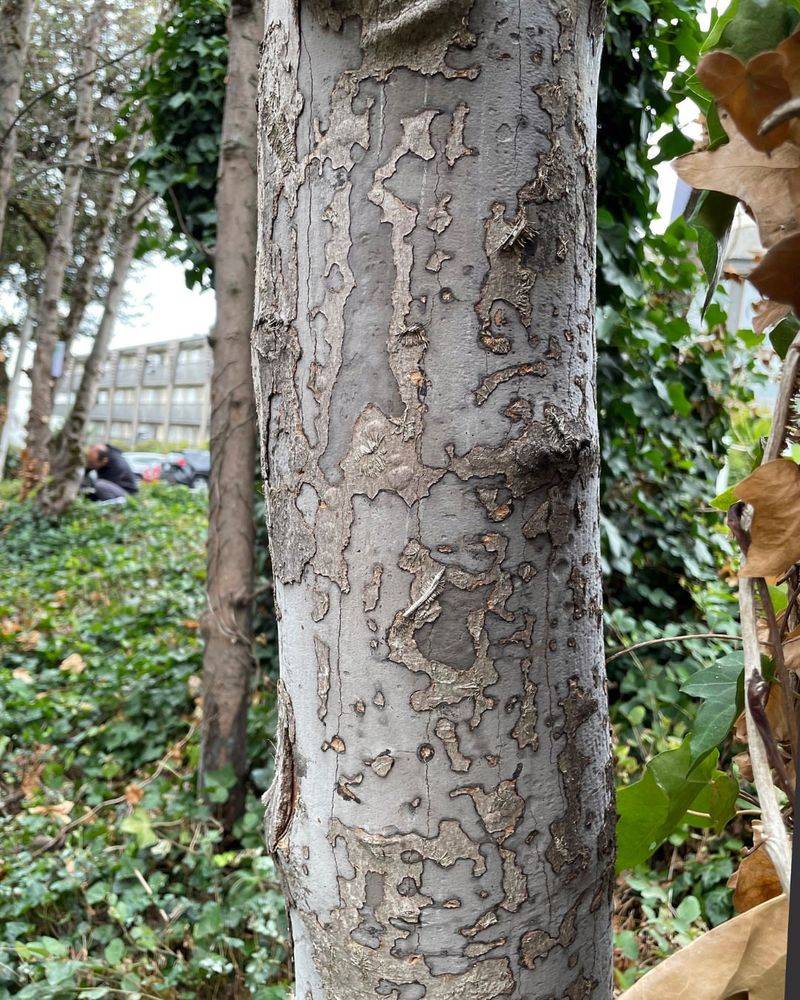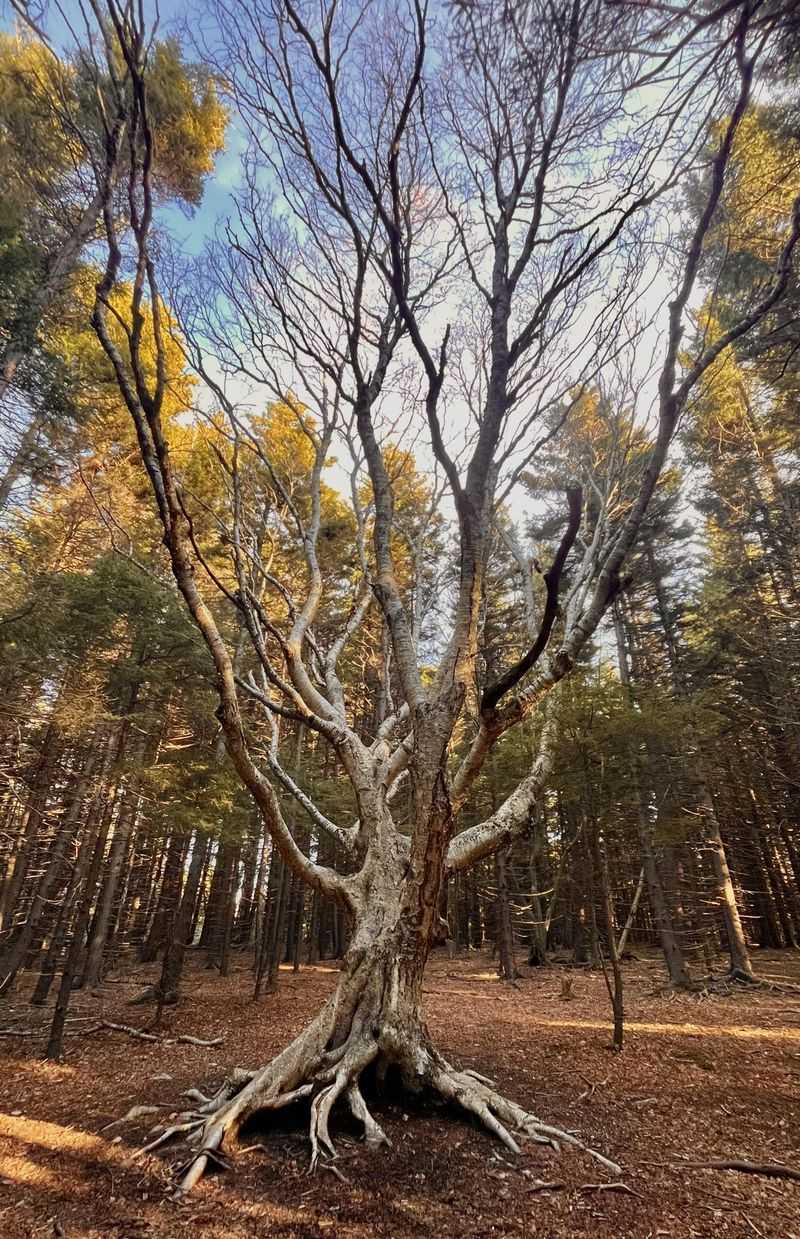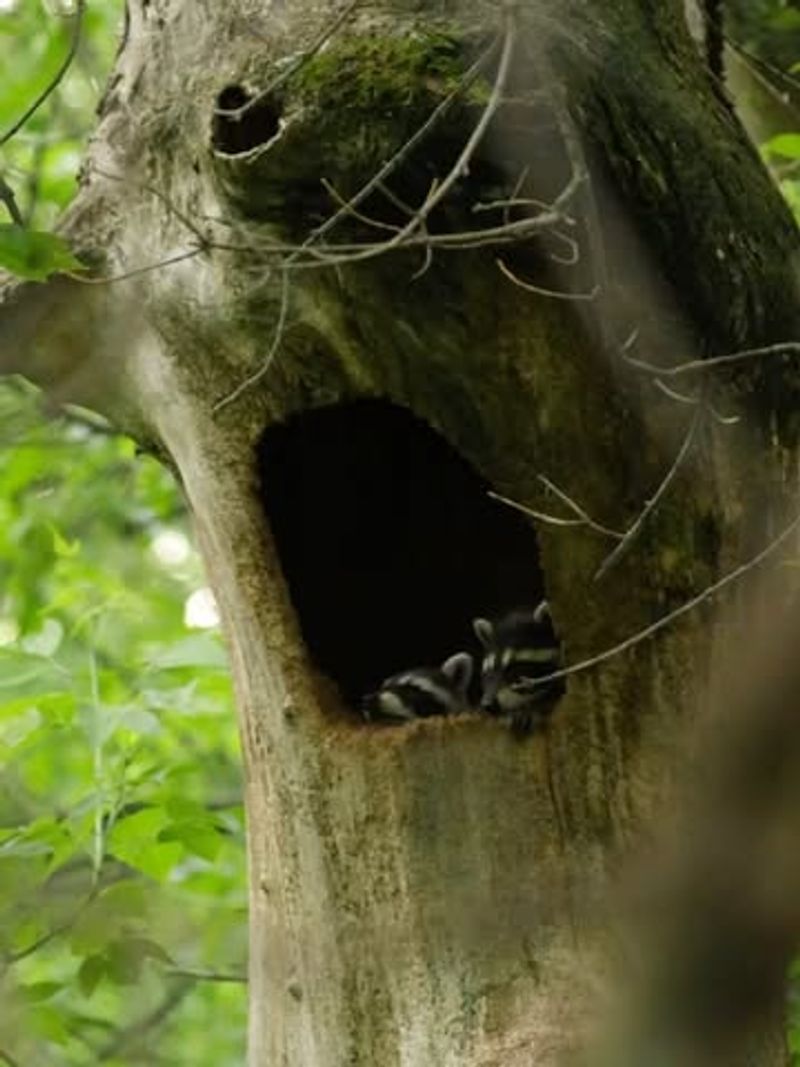If you’ve noticed purple-painted trees around Washington, there’s more to the story than meets the eye. It’s not just decoration—these markings often indicate environmental or protective measures.
Learning the reasons behind it can give a new perspective on your local trees. It’s a curious sight that reveals how people care for their surroundings.
1. Property Line Warnings Keep You Legal
Landowners in Washington use purple paint instead of posting dozens of “No Trespassing” signs everywhere. A simple purple stripe on a tree tells hikers and hunters they’re about to cross onto private property.
Signs can fall down or get stolen, but paint lasts for years. Purple marks appear at eye level and again lower down so you can spot them easily.
Respecting these boundaries keeps you out of legal trouble and helps maintain good relationships between outdoor lovers and property owners.
2. Logging Companies Mark Timber Boundaries
Commercial timber operations across Washington paint trees purple to show which sections are scheduled for harvest. Different colored paints help logging crews identify specific cutting zones and protected areas.
Purple typically indicates boundary trees that should remain standing while surrounding timber gets removed. Workers rely on these visual cues when operating heavy machinery in dense forests.
Without clear markings, valuable trees might accidentally get cut or protected zones could be damaged during operations.
3. Wildlife Habitat Protection Zones
Conservation groups and forest managers paint trees purple around critical wildlife habitats in Washington. Endangered species nesting sites, salmon spawning streams, and sensitive ecosystems need extra protection from human activity.
Purple boundaries warn people to avoid disturbing animals during breeding seasons or migration periods. Biologists carefully map these zones to balance recreation with conservation needs.
Seeing purple paint means you’re near an area where nature needs space to thrive without interference from visitors or development.
4. Research Study Areas Need Clear Borders
Scientists studying Washington’s forests mark research plots with purple paint so other visitors know not to disturb their work. Long-term studies tracking tree growth, soil health, or wildlife populations require undisturbed conditions for accurate results.
Purple boundaries prevent well-meaning hikers from accidentally moving equipment or trampling experimental areas. Universities and environmental agencies conduct important climate research in these marked zones.
Your cooperation helps researchers gather data that protects forests for future generations.
5. Disease Quarantine Stops Tree Infections
When tree diseases or invasive insects appear in Washington forests, officials paint purple rings around infected zones. Quarantine boundaries prevent people from accidentally spreading harmful pests to healthy trees on their boots, equipment, or vehicles.
Sudden oak death and bark beetles can devastate entire forests if not contained quickly. Purple warnings give forest managers time to treat or remove sick trees safely.
Staying outside marked areas helps protect Washington’s magnificent old-growth forests from devastating outbreaks.
6. Trail Maintenance Boundaries Guide Workers
Park maintenance crews paint trees purple to mark work zones along Washington’s popular hiking trails. Renovation projects, erosion control, and habitat restoration require keeping visitors away temporarily for safety reasons.
Purple boundaries show volunteers and contractors exactly where they should focus their efforts without accidentally damaging surrounding areas. Trail crews move these markers as projects progress through different sections.
Respecting work zone boundaries helps improvements happen faster so everyone can enjoy better trails sooner.
7. Fire Break Lines Prepare for Emergencies
Wildfire prevention teams paint purple lines along strategic firebreak locations throughout Washington’s forests. During dry seasons, these marked corridors show where crews will clear vegetation or conduct controlled burns to stop fires from spreading.
Purple boundaries help firefighters quickly locate defensive positions when battling blazes. Emergency planning requires marking potential fire lines years before disasters strike.
Understanding these markers helps residents and visitors recognize important wildfire safety infrastructure protecting communities and wilderness areas alike.

